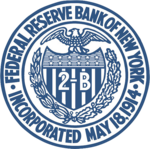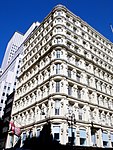John Street Methodist Church

The John Street United Methodist Church – also known as Old John Street Methodist Episcopal Church – located at 44 John Street between Nassau and William Streets in the Financial District of Manhattan, New York City was built in 1841 in the Georgian style, with the design attributed to William Hurry and/or Philip Embury. The congregation is the oldest Methodist congregation in North America, founded on October 12, 1766 as the Wesleyan Society in America.The Society built its first church, a blue stucco barn called the Wesley Chapel, on this site in 1768; its design was attributed to Barbara Heck. Timber from the Chapel was later used in building the Bowery Village Methodist Church and the Park Avenue United Methodist Church. The second church on this site was built in 1817-18, and the extravagance of the building provoked a secession from the congregation by Rev. William Stillwell. The third church, the current one, was necessitated by the widening of John Street.The church was designated a New York City Landmark in 1965 and added to the National Register of Historic Places in 1973. In 1984, the church sold its air rights to 33 Maiden Lane.Hymnist Fanny Crosby was a member of the church congregation for many years.
Excerpt from the Wikipedia article John Street Methodist Church (License: CC BY-SA 3.0, Authors, Images).John Street Methodist Church
John Street, New York Manhattan
Geographical coordinates (GPS) Address Nearby Places Show on map
Geographical coordinates (GPS)
| Latitude | Longitude |
|---|---|
| N 40.709041666667 ° | E -74.008 ° |
Address
66 John Street
John Street 66
10038 New York, Manhattan
New York, United States
Open on Google Maps










